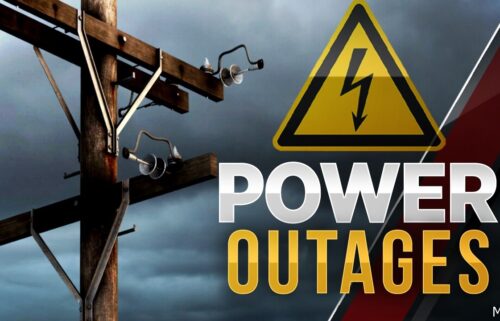Markets are now treating UK bonds like Greek and Italian debt
By Julia Horowitz, CNN Business
The pound may have paused its headlong crash toward parity with the US dollar, but the damage to the UK economy sparked by Prime Minister Liz Truss’ huge tax-cutting gamble is still rippling through financial markets.
Sterling stabilized early Tuesday to trade near $1.08, bouncing off Monday’s record low of around $1.03. The price of benchmark 10-year UK government bonds also increased slightly.
But few analysts believe the volatility is over yet. Bond prices, in particular, remain unsteady. And when the dust settles, the country will be forced to grapple with a steep increase in borrowing costs, adding to pressure on an economy already grappling with nearly 10% inflation and the beginnings of a recession.
“This is a situation where government borrowing costs — and therefore all our borrowing costs — are incredibly vulnerable,” economist Mohamed El-Erian, an adviser to Allianz, told the BBC on Tuesday.
The plunge in the pound is bad enough. It will drive up import costs, adding to pressure on the Bank of England to hike interest rates faster and higher. Yet the extraordinary collapse in government bond prices, and corresponding jump in yields, could be even worse.
Medium-term borrowing costs in the United Kingdom, as measured by the yield on five-year bonds, have shot up above those of Greece and Italy, two countries that are notoriously seen as riskier bets for investors because of their high levels of debt.
Debt as a percentage of economic output in Greece stood at 189% in March, while Italy’s debt-to-GDP ratio was nearly 153%. In the United Kingdom, that figure was almost 100%.
Why borrowing costs have jumped
Yields on bonds around the world have jumped as top central banks have launched an aggressive campaign to slow inflation, hiking rates at a fast clip.
UK government debt has sold off sharply, however, in part because Truss and her team have said they will need to borrow more to fund their economic program, which includes the biggest tax cuts in 50 years and capping energy bills for millions of households and businesses this winter.
The need to raise more money from investors comes just as the Bank of England is due to start selling some of its holdings of government bonds, which it ramped up during the early days of the pandemic.
Previously, markets were absorbing about £100 billion ($108 billion) in UK bonds annually, according to Ross Walker, chief UK economist at NatWest Markets. As the Bank of England shifts from buyer to seller, and the UK government borrows more, supply will climb to about £300 billion ($323 billion), he estimated.
“A meaningful rise in yields was always warranted,” Walker said, noting that the world is “moving to a different fiscal and monetary environment.”
Still, the spike has been exacerbated by a crisis of confidence about where the UK economy heads next. Investors are worried that the government’s attempt to boost growth by bolstering demand runs counter to the aims of the Bank of England, which is trying to lower demand so it can get inflation under control.
At the beginning of August, the yield on 5-year UK gilts was 1.55%. On Tuesday morning, it stood at 4.27%. That’s a huge move in markets where changes typically occur in tiny fractions of a percent.
What happens next and why it matters
It’s not yet clear where yields will settle, though there’s consensus they will remain elevated. Much could depend on future communications from the Bank of England, which has said it will hike interest rates to fight inflation as needed, but the central bank isn’t scheduled to meet until November.
Investors will also closely watch commentary from the government. Kwasi Kwarteng, the UK finance minister, has promised to release more details about the government’s approach to ensuring debt sustainability, while also indicating additional tax cuts could be on the horizon. At a meeting with anxious investors Tuesday, he reiterated the British government’s “commitment to fiscal sustainability.”
“We’re still in a phase where markets in general are trying to establish new equilibrium values,” Walker said.
Yet higher borrowing costs will have consequences for both the government and households. Rising yields mean the government will have to pay out more in debt servicing costs, cutting spending or raising taxes to find the money to do so. Higher rates from the Bank of England will make it more expensive for businesses and homebuyers to take out loans.
“This is going to make the fiscal bind that the UK is in even tighter,” said Andrew Wishart, senior economist at Capital Economics. “It’s going to increase their interest costs significantly.”
The Resolution Foundation, a think tank that’s been critical of the government’s plans, estimates that bond market movements will add about £14 billion ($15.1 billion) in borrowing costs by the year 2026 to 2027.
People with mortgages will also pay the price. UK lenders suspended the sale of new mortgage products on Monday as they waited for the volatility to ease. When business resumes, the cost of financing a home purchase is expected to soar. Those who need to refinance are also in trouble.
If the Bank of England hikes interest rates to 6%, as some market participants now expect, a person refinancing a 20-year fixed-rate mortgage of £146,000 ($157,000) will have to pay an extra £309 ($333) per month, according to investment firm AJ Bell. That’s £108 ($116) more than estimated before last Friday.
The-CNN-Wire
™ & © 2022 Cable News Network, Inc., a Warner Bros. Discovery Company. All rights reserved.



